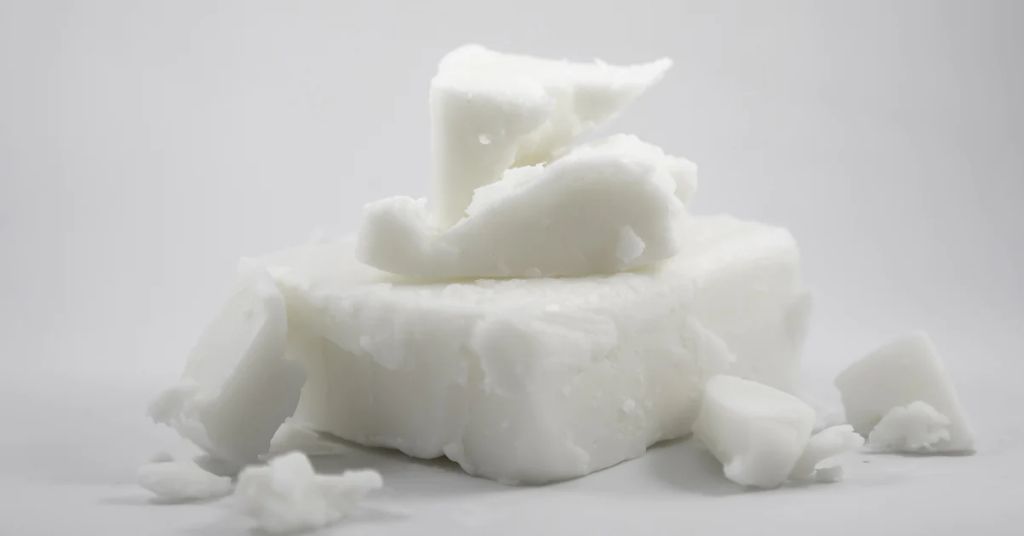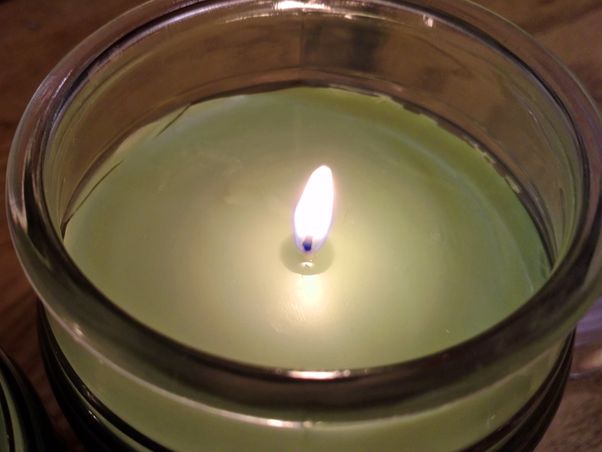Can I Use 100 Coconut Wax For Candles?
Coconut wax has become an increasingly popular alternative to paraffin wax for candle making. Coconut wax comes from the saturated fats in coconut oil and offers several benefits over paraffin such as being cleaner burning and requiring less frequent trimming of the wick. However, working with 100% coconut wax also has some unique challenges. The purpose of this article is to provide an overview of using 100% coconut wax for candle making, including the pros and cons, best practices for adding fragrance and wicks, and tips for preparing and testing coconut wax candles.
Whether you are an experienced candle maker looking to switch to more natural waxes or someone new to candle making considering coconut wax, this article will help you determine if 100% coconut wax is suitable for your needs.
What is Coconut Wax?

Coconut wax is a natural wax made from the oils of coconut palms. It is extracted from coconut oil, usually through a hydrogenation process. The main component of coconut oil is lauric acid, a fatty acid that gives coconut wax its hardness and high melting point.
Coconut wax is considered a sustainable and environmentally friendly wax because it is made from coconuts, a renewable resource. Coconut palms can produce coconuts year-round and the trees replenish faster than other wax sources like soy or beeswax.
Compared to paraffin wax which is made from petroleum, coconut wax is a more natural option. It does not release VOCs or soot when burning like paraffin can. Overall, coconut wax provides a sustainable candlemaking alternative.
Source: https://slowmade.co/blogs/journal/why-coconut-wax
Pros of Using 100% Coconut Wax
Using 100% coconut wax for candle making has several advantages. Coconut wax is a natural, sustainable material that comes from coconuts. According to https://scentsandaroma.com/pros-cons-of-coconut-wax-candles/, coconut wax is environmentally friendly since it does not require cutting down trees or other deforestation practices. Coconut palms grow abundantly in tropical areas and do not need to be replanted after harvest like other trees.
Coconut wax is obtained through a natural process of collecting sap from coconut palms and does not require any chemical processing or use of synthetic materials. This makes it appealing to consumers looking for natural candle options.
Overall, using 100% coconut wax aligns with sustainability and natural living trends popular among many candle enthusiasts today.
Cons of Using 100% Coconut Wax
While coconut wax has several benefits, there are some potential drawbacks to using 100% coconut wax for candle making:
Coconut wax is harder to work with than other waxes like soy or paraffin. It has a very narrow melting point range which means the wax needs to be heated to a specific temperature before pouring. Going above or below this small temperature window can cause issues with wicks sticking or frosting on the candles. Working with 100% coconut wax requires precise temperature control.
Coconut wax is also sensitive to fragrance oils and some additives which can cause seizing or frosting. Not all fragrance oils work well with coconut wax, so testing is required. Essential oils in particular can cause problems.1
The natural hardness and crystallization of coconut wax makes it prone to frosting or sweating. This is when white spots appear on the surface of the candle. Proper curing is required to help prevent frosting.
Coconut wax will also set up faster than other waxes which can make pouring more challenging. Work quickly and have your containers and wicks ready before melting the wax.
Fragrance Oils for Coconut Wax
When selecting fragrance oils for coconut wax candles, light and tropical scents tend to perform best. The natural coconut aroma of the wax pairs well with fruity, sweet, and creamy fragrance notes.
Some recommended fragrance oil options for coconut wax include:
– Pineapple, mango, coconut cream, pear, papaya, banana, vanilla, honey, sugar, cake, cinnamon rolls, and other warm bakery scents (https://www.candleers.com/how-to-make-coconut-wax-candles/)
Lighter fragrances allow the natural coconut fragrance to shine through, while tropical fruit blends complement it. Avoid strong, complex, or spicy fragrances, as they may not pair as well with the coconut undertones.
Testing different oil options on a small scale first is recommended to find your perfect coconut wax scent pairings.
Wicks for Coconut Wax
When making coconut wax candles, you will need a larger wick than you would with other waxes like paraffin or soy. This is because coconut wax becomes liquid at a lower temperature than most candle waxes. As a result, the wax pools and melts faster when burning, so you need a larger wick to soak up all that melted wax.
The most commonly recommended wicks for coconut wax candles are HPSP wicks. HPSP stands for “High Performance Safety Plus” and these cotton-core wicks are designed specifically for use with coconut wax. They come in various sizes to accommodate different jar diameters and wax volumes. HPSP wicks have a flat braid design that provides excellent capillary action to soak up all the melted wax.
When testing wick sizes, it’s best to start in the middle of the recommended range for that particular jar size and wax amount. Monitor the melt pool and adjust up or down until you achieve the proper melt and a clean burn without soot or mushrooming. Going too small can lead to tunneling, while too large may result in soot, airflow issues, or an overly hot flame. With testing and experience, you’ll dial in the perfect HPSP wick for your coconut wax candle.
Melting and Pouring Temperatures
When working with 100% coconut wax, it is important to melt and pour the wax at the proper temperatures for best results. Coconut wax should be melted between 185-200°F to ensure it is fully liquefied before pouring. According to Coconut 83 Wax (Natural Coconut Wax) – CandleScience, coconut wax should be poured around 135°F to allow time for any bubbles to rise to the top before the wax starts to set up.
Pouring at too high of a temperature can result in sinking or frosting on the candle surface. Pouring at too low of a temperature may lead to wax setting up too quickly and not giving bubbles enough time to dissipate. By melting between 185-200°F and pouring around 135°F, you can achieve the best possible results with fewer cosmetic imperfections when working with 100% coconut wax.
Making Containers for Coconut Wax
When making containers for candles using 100% coconut wax, it’s important to avoid using metal. The higher melting point of coconut wax compared to other waxes means that it can get much hotter. This heat can damage metal containers, causing discoloration, warping, or even holes.
Instead, glass containers are the best choice for coconut wax candles. Glass can withstand the higher temperatures needed to melt coconut wax fully. Glass won’t degrade or interact with the wax in any way. This allows the coconut wax’s natural color and aroma to shine through.
Look for heat-resistant borosilicate glass or tempered glass to handle the heat of liquid coconut wax. Glass also allows you to easily see the wax color as the candle burns down. Simple cylindrical jars or more ornate containers can both work well. Just ensure the opening is wide enough for wick and wax pouring.
With quality glass containers, you can confidently create lovely coconut wax candles that burn evenly while showcasing the wax’s natural properties.
Curing and Burning Coconut Wax Candles
Before lighting your coconut wax candles, it is crucial to let them cure for 1-2 weeks. Curing allows any moisture left in the wax to evaporate, which will help the candles burn cleaner and avoid issues like sputtering. The curing process also allows the crystals in the wax to settle and harden properly. During the curing period, avoid placing the candles anywhere excessively warm or cold.
Once your coconut wax candles have cured, trim the wicks to 1⁄4” before the first burn. This will help prevent issues like sooting, tunneling, and an uneven flame. Trim the wicks before each burn to maintain an even flame. Coconut wax candles should be burned for at least 1 hour per inch of diameter to achieve a full melt pool. Allow the wax pool to solidify completely before relighting the candle. With proper curing and wick maintenance, coconut wax candles will provide a clean, even burn.
Conclusion
Coconut wax presents some unique challenges when making candles, but the rewards are worth it. While the soft, pliable texture makes perfectly smooth tops more difficult, the incredible scent throw and luminous glow of finished coconut candles is unparalleled. Following best practices like adding small amounts of harder waxes, precisely controlling pouring temperatures, using the right wicks, and properly curing the candles will help candlemakers overcome the hurdles of working with 100% coconut wax.
The natural, non-toxic properties of coconut wax appeal to many candle enthusiasts looking for a cleaner burning wax. Taking the time to test and perfect your coconut candle recipe will provide a truly superior finished product. Coconut wax candles require more care and precision, but the results are candles that are beautiful, fragrant, and delightful to burn. For candlemakers interested in exploring new waxes, coconut is a rewarding challenge that often leads to stunning creations.





